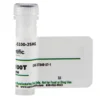Edit Content
Contact Us
- 406, Nathubhai Tower opp Dhru Motors, Udhana Main Rd,Surat-394210, Gujarat
- +91 98243 72152
- +91 97278 08068
- [email protected]
- [email protected]
- Week Days: 09.00 to 19.00 Sunday: Closed


Lyticase from Arthrobacter luteus has been used:
Yeast cells are difficult to disrupt because the cell walls may form capsules or resistant spores. DNA can be extracted from yeast by using lysing enzymes such as lyticase to induce partial spheroplast formation. Spheroplasts are subsequently lysed to release DNA. Lyticase is preferred to digest the cell walls of yeast and generate spheroplasts from fungi for transformation. It contains β-(1→3)-glucan laminaripentaohydrolase along with β-(1→3)-glucanase, protease, and mannanase activities. Lyticase is used for yeast cells like Candida, Debaryomyces, Saccharomyces, Saccharomycopsis, Saccharomycodes, Eremothecium, and Schwanniomyces species. Lyticase hydrolyzes poly-β(1→3)-glucose such as yeast cell wall glucan.
| Product | Size | Catlog No. | |
| Lyticase | 2000 U | SCG021 | |
| 5000 U | SCG021A | ||

Lyticase from Arthrobacter luteus has been used:
| Product | Size | Catlog No. | |
| Lyticase | 2000 U | SCG021 | |
| 5000 U | SCG021A | ||
Reviews
There are no reviews yet.